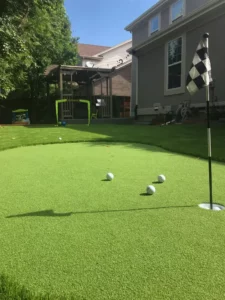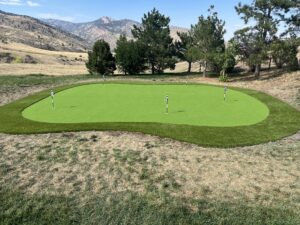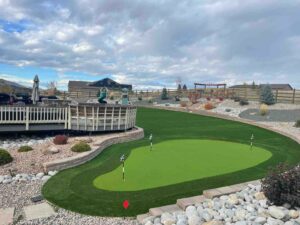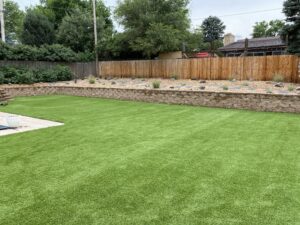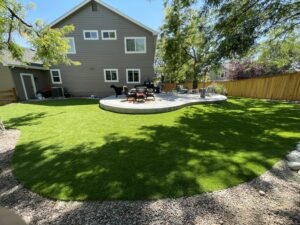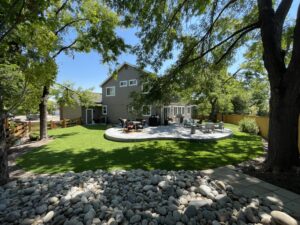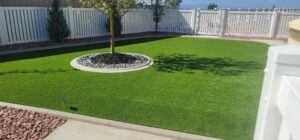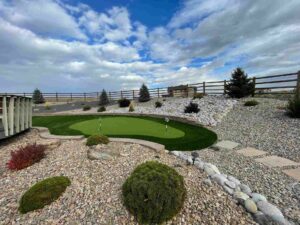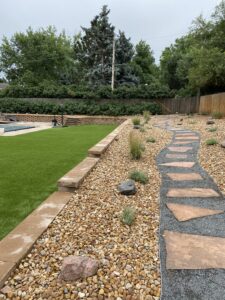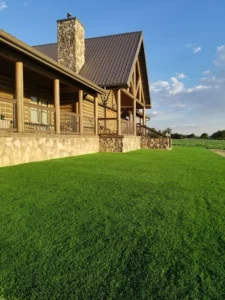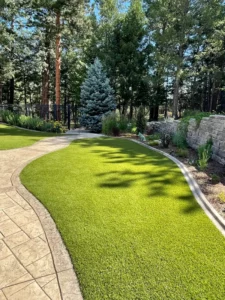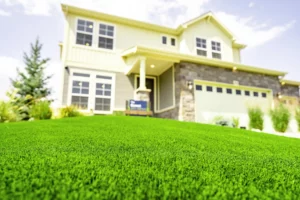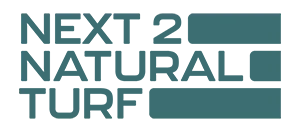Residential Artificial Turf
Isn’t it time you made the switch to a high-quality artificial turf lawn? You can put an end to rising water bills, costly maintenance and lawn care equipment. And with our ONE-DNA™ fully recyclable artificial turf product, you get an eco-friendly solution while helping reduce carbon footprints. An artificial turf lawn is an always beautiful alternative to natural turf that can save you considerable amounts of money over time.
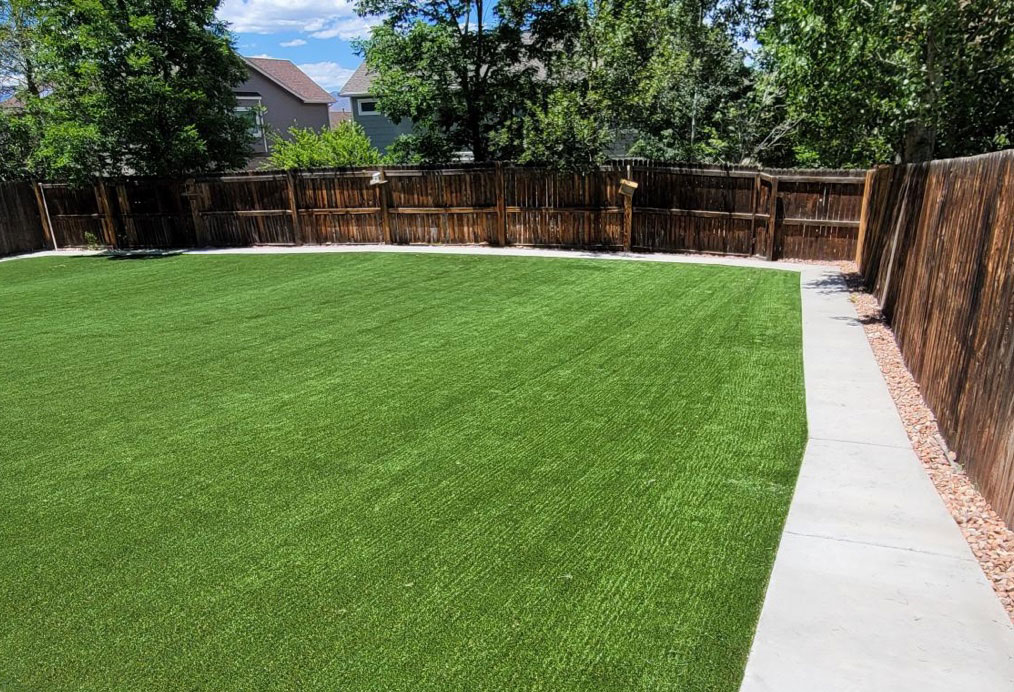
Benefits
Artificial turf [grass] is the perfect choice for your busy life
An artificial turf lawn installed by Next 2 Natural Turf is safe, durable and economical. There’s no more need to water, mow or fertilize, which means more time to do the things you truly enjoy. A Next 2 Natural artificial turf lawn is always green, so grab the family and spend your weekends living out your next adventure.
N2N INSTALLATION PROCESS
The N2N Installation Process includes:
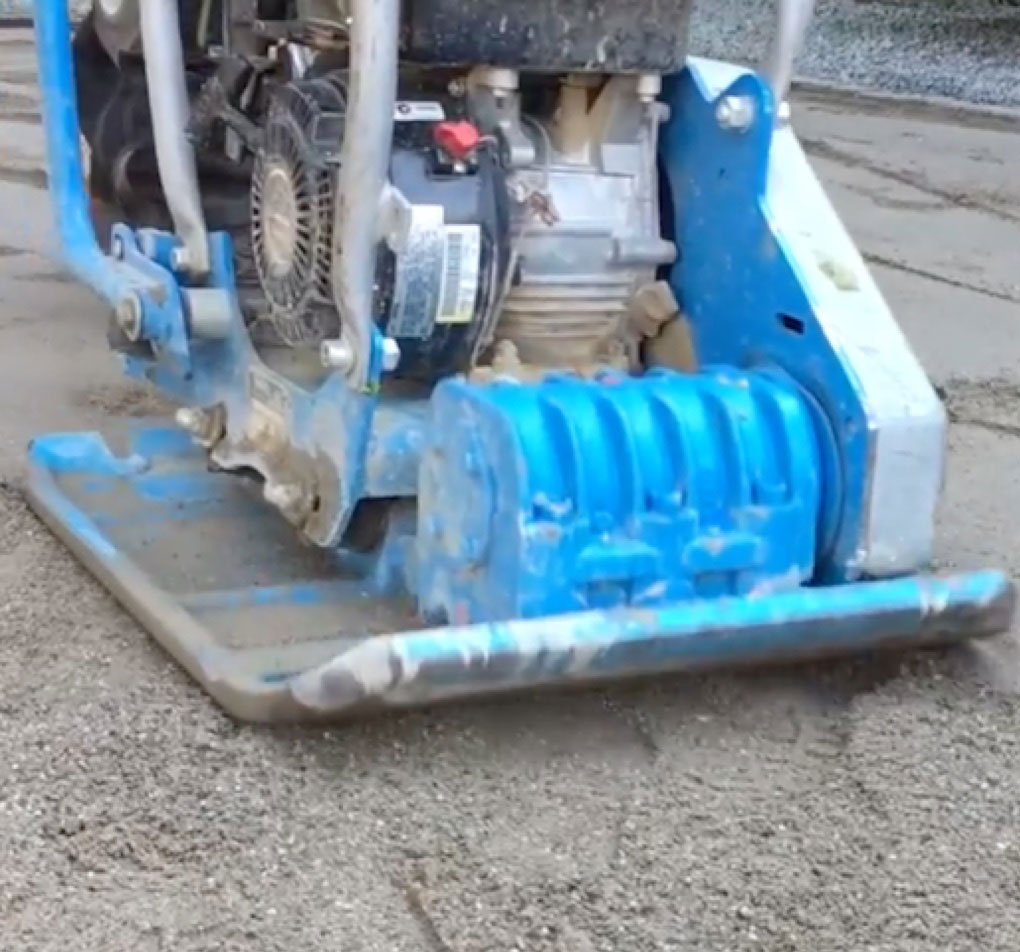
Care and precision go into the process of excavation and compaction, ensuring that the turf is laid on a flat, stable foundation with adequate drainage capability.
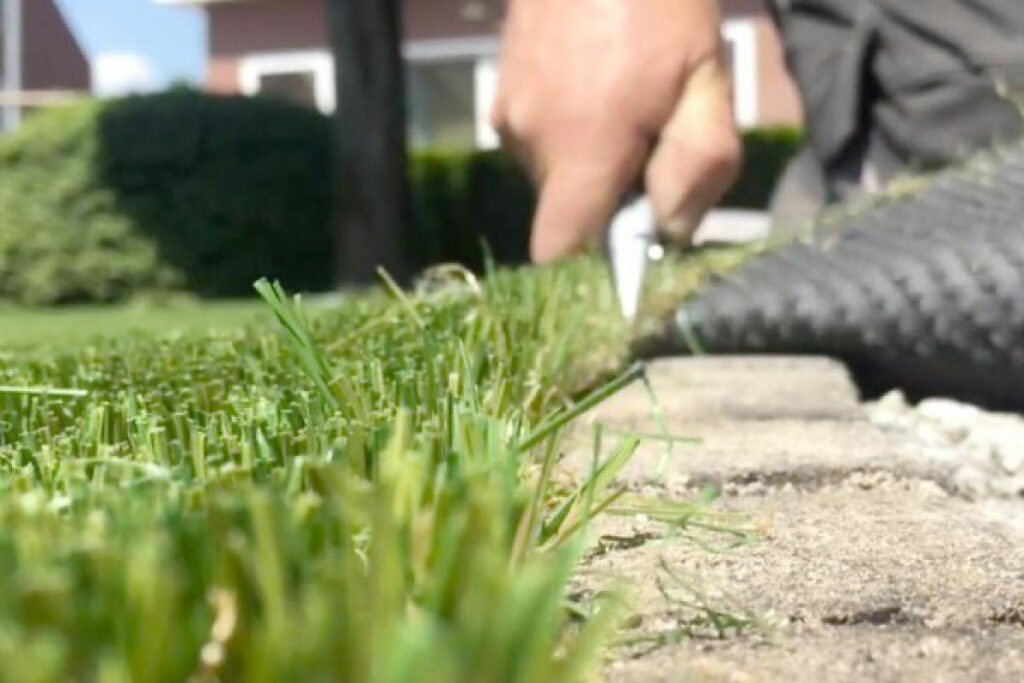
We lay the turf in a precise orientation to ensure that the edges of the turf extend all the way to the borders — no gaps or bare spots. Ground pins are used to secure edges.
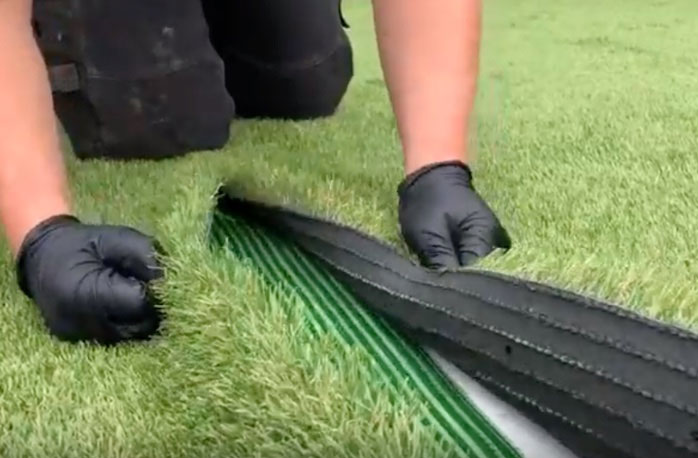
Sometimes pieces of turf must be joined together. That has to be done in a way that hides the seams from view. Getting this right requires precision and close attention to small details. By doing this correctly, the seams are hardly visible and do not come apart over time.
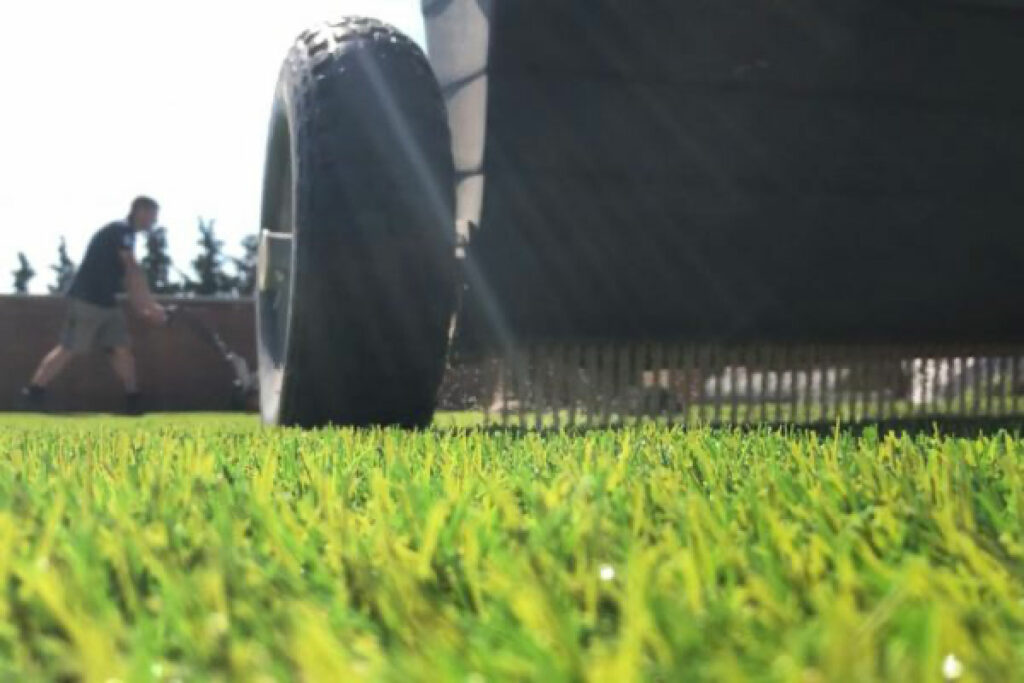
Turf infill adds stability to the carpet, it gives the fibers extra support, and it adds to the natural look of the lawn. There are special infill choices for pets that help reduce odors while still fulfilling the critical role of traditional infill.
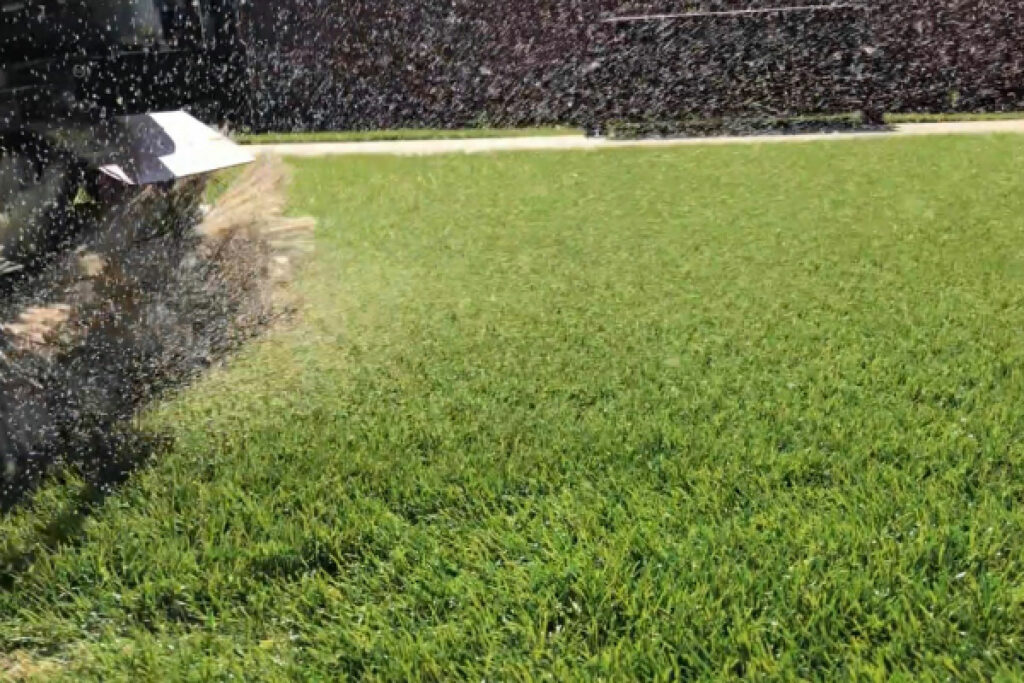
The last step is to brush the carpet with a special power brush. This final grooming also brushes the fibers upright for a perfect finish.
Care
Caring for your artificial turf lawn is quick and easy
Once your beautiful new artificial turf lawn is installed, keeping it looking attractive is as easy as following these simple care suggestions.
Rinse with a hose once a month
Maintain your turf by rinsing away loose debris, animal waste or sticky spots with a hose.
Spot treating
A mixture of an all-purpose cleaner or popular dish soap and water can be applied a couple times a month, especially during the summer. Gently scrub and rinse clean.
Brush frequently
Using a rake or stiff, non-metal brush keeps the artificial grass blades standing upright and mimicking natural grass.
Contact us for your free artificial turf consultation
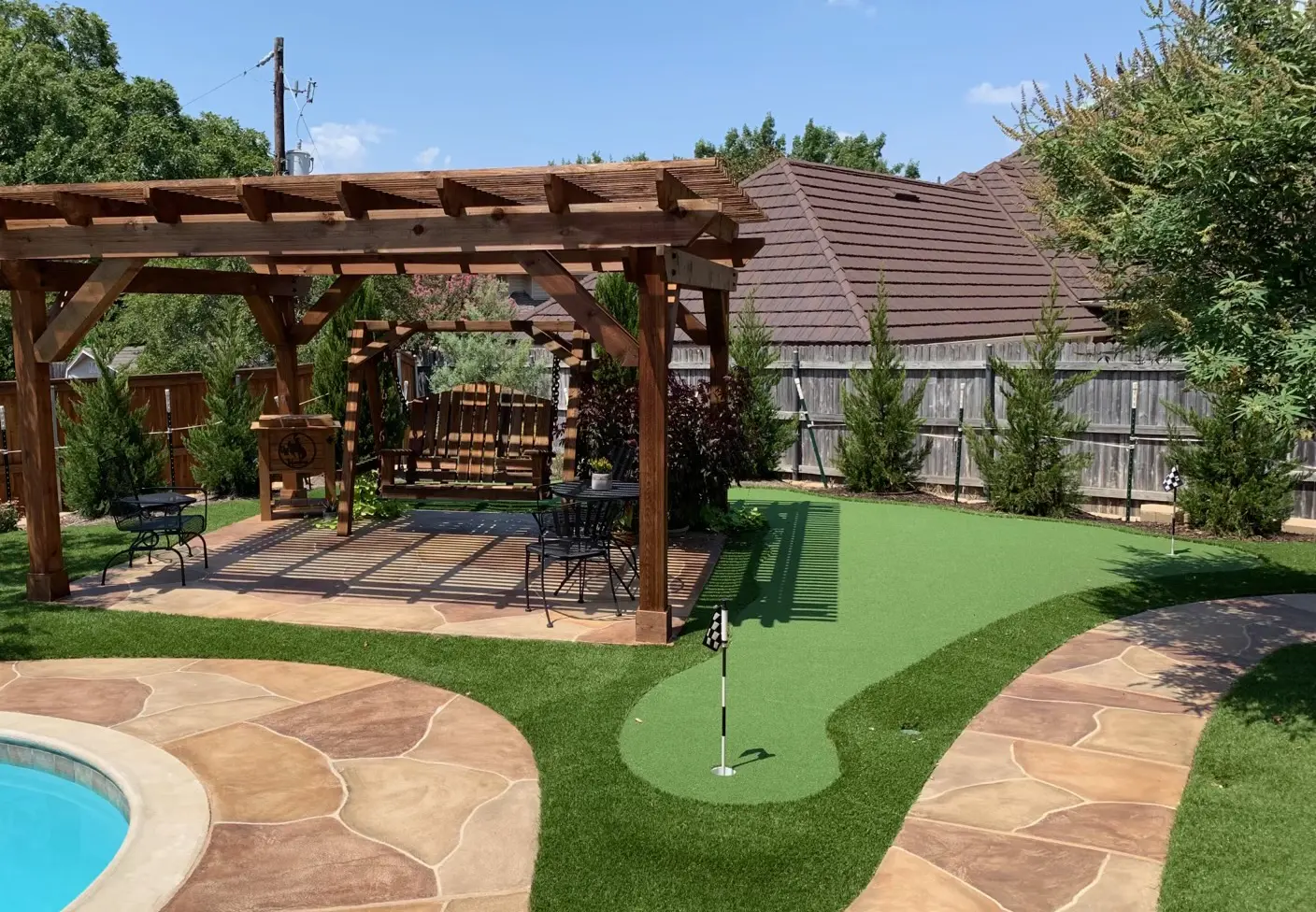
FAQs
Frequently asked questions about residential artificial turf
How much less water does artificial turf use?
Natural grass requires irrigation at a rate of about 2 gallons of clean water for every square meter (or one liter per square foot). Irrigating at this rate and maintaining it results in a constant one inch of water present in the soil to help grass thrive. Maintaining a lush, verdant lawn requires constant irrigation and care. Even small lawns in warmer or more arid climates can consume 500 gallons of water each year or more.
Is artificial turf environmentally responsible?
Natural grass relies on chemical fertilizers, pesticides and other chemicals to stay green and lush. Some of those chemicals can be harmful to you and to the environment. Children and pets find themselves at particular risk of allergic or other reactions when exposed to certain landscaping chemicals. The perfect lawn can be achieved without harsh chemicals or heavy irrigation, and it comes in the form of Next 2 Natural artificial turf.
Is artificial turf safe for kids and pets?
Cheaper turf products are manufactured with materials like lead or zinc, both of which can be harmful to young children and pets. These metals absorb through the skin and can cause numerous health problems. Our products are completely safe for use by children and pets — no harsh chemicals or heavy metals.
How much can I expect to spend on artificial turf?
The cost for artificial turf averages about $4 per square foot. Product choice and quality will affect that estimate. Installation costs are affected by the size of the project and complexity of the fitting needs where the turf is to be laid. Our prices are competitive and we work hard to get you the products you need while staying within budget.
Is artificial turf cheaper than natural grass?
Over time, artificial turf can save home and business owners significantly over the cost of maintaining growing grass. Annual costs to maintain turf are much less than they are for grass.
Are there lower-cost artificial turf options?
Synthetic grass is not a product on which you want to cut corners over cost. Cheap turf fades in color over time. It tears easily, making frequent patching and repair necessary. At Next 2 Natural, we think you should only have to invest once for a beautiful, lush lawn that lasts for years. If you are worried about cost, contact us. We are sure we can find a high-quality product that suits both your needs and budget.
Can artificial turf be installed in any weather?
The optimal temperature for installing artificial turf is between 42 and 59 degrees Fahrenheit. Typically, strips are rolled out into position and allowed to acclimate to current outdoor temperatures before the installation is completed. Extreme fluctuations in temperature can have an adverse effect on our ability to complete an install on a specific day or date. We are committed to installing your new turf in the most responsible way possible and that means scheduling and completing installations when weather and temperature conditions permit.
Does artificial turf look fake?
Current synthetic turf technology does an excellent job of mimicking the look and feel of real grass. We are happy to provide you with samples so you can judge for yourself how natural our products look and feel.
Does artificial turf stain your clothes?
One of the selling points of our turf is that it is clean and chemical free. There is nothing that can rub off on fabric or create stains like natural grass.
Does weather affect artificial turf?
Our products can stand up to drastic fluctuations in temperature and weather conditions. There are very few conditions that could cause any significant damage or concern.
Does artificial turf attract animals and rodents?
No. Artificial turf is not the right environment for rodents or other garden pests, so they tend to gravitate to yards with natural grass to dig and burrow.
How is artificial turf made?
There are huge differences in the quality of artificial grass. A simple example: Most artificial grass types have single backing (which is the fabric on the bottom side) while Next 2 Natural products have double backing. This makes it firmer, easier to install, adds more back support to the grass and protects against shrinking and expanding. Our thread, the grass itself, contains no heavy metals. Many other types of artificial grass have color pigments that contain tiny concentrations of heavy metals. For plastic toys there are very strict regulations in place, but for artificial grass this does not apply. That’s why we demand ourselves to use fibers that are guaranteed to be clean and safe. Does the quality of the material have an influence on the way artificial grass is produced? No. Not directly. The process is pretty much uniform, regardless of quality. That’s why we can summarize the production of artificial grass easily into five steps.
Step 1 – Tufting
Initially, there are two resources: fiber and backing. The fibers come on big spools, and the backing comes on rolls of over 4 meters wide. The first step is to bring those two together. This happens in the so-called ‘tuft’. The fibers are transported through tubes that are hanging on top of the machine into needles. Those needles stitch the fibers from above into the backing. A hook then pulls the thread back, creating a loop. This process is called tufting. And indeed, that comes pretty close to sewing with a sewing machine. The difference is that the thread disappears in the fabric and the grass needs to stand up straight in the backing.
Step 2 – Coating
The fibers are now still loose in their backing. When you grab a fiber on the bottom side of the backing, you will pull it out without any effort. That is why the bottom side will get a protective layer. This is a coating of glue, which makes sure that the fibers will stick to the backing. There are two ways in which the coating can be applied. With most machines, the artificial grass enters the machine with the backing face up. The coating is then pulled over the backing. We, however, choose to insert the artificial grass with the backing face down. The coating is then ‘licked’ to the bottom side. This process results in a more equal and smooth result.
Step 3 – Drying
Another part of the process that shows the difference between superior and inferior quality artificial grass is the drying process of the coating. Usually, artificial grass goes straight into the oven to dry. Not with us. First, we put the grass into an infrared booth. In this booth the grass is given a ‘wallop’. We give the grass a good scare, so to say. This way the coating will already lose much of its moisture. The advantage is that the oven can do its work on lower temperatures.
Is that important?
Yes. The more time you give anything to dry, the better, more beautiful and stronger the result. This applies to everything including artificial grass. And we understand that the higher the temperature in an oven, the more quickly the coating will dry, the faster you can have grass run around the spool and the more meters you can produce per hour. Financially, the hot and fast way is more profitable. But from the point of view of quality, we are willing to be cool and slow.
Step 4 – Perforating
Artificial grass needs to be perforated. If this is not done, rainwater cannot escape, and pools will form on your lawn. It is a small step, but essential in the process. There is really no difference in this in any artificial grass product. That being said, it is definitely an advantage that our backing consists of a double layer. This makes it more solid than most other backings. With every hole you make in the material, you lessen its integrity. But: the thicker the material, the less impact this has.
Step 5 – Rolling
This might be the most underappreciated and probably the trickiest part of producing artificial grass: rolling it up, or dragging, as they say here in our factory. The grass is 4 meters wide when it is dragged onto cardboard spools. The big challenge here is to make sure the tension that comes onto the grass is exactly — and we mean exactly — the same across the entire width of the spool. Because what happens if the tension isn’t the same everywhere? The grass will ripple in places where there is less tension. It is given room to maneuver and expand. This leads to unusable pieces. And that is something we definitely do not want. We strive for uniform quality, across the entire width of the spool. The artificial grass is finished. It is wrapped in plastic wrap to protect it against external influences and is then stored in the warehouse. Usually, it is then transported over the entire globe.
How is artificial turf installed?
We follow industry-leading installation techniques to ensure that your new turf lawn is properly leveled with proper irrigation and drainage. With a Next 2 Natural turf install you can expect: Seamless finish, Quality edging and Accurate leveling
We always install expertly leveled lawns with no visible seams. This is one area where many of our competitors fall short of customer expectations and one that we take very seriously. Between our expert fitting team, the quality of our construction materials and the specialized, up-to-date equipment we use to complete the job, we are sure you will be thrilled with the seamless look of your new artificial turf.
There’s a Next 2 Natural artificial turf product to fit any yard and application
Take a look at a few of our recent projects and products in use.
